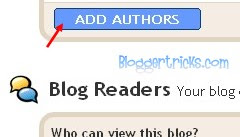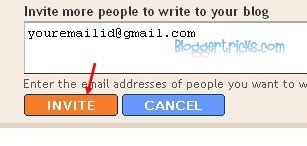Very Useful One.I Copied information from http://www.bloggertricks.com/2008/02/how-to-transfer-bloggerblogspot-blog.html.
1.First Sign into your blogger dashboard. Click on the settings link next to your blog name.[see the below screenshot]

2.Now,click on the Permissions

3.Before transfering your blog ie. before making someone admin,you need to first invite him and make him as author.Click on the 'ADD AUTHORS' button to add.

4.Enter the person's email id and click on the INVITE button.

5.After inviting him,blogger will send an email to that person asking him to visit a link and confirm that he is willing to contribute to your blog.

6.Once the invitee confirmed,go to the permissions page once again.Now,you will see an option to grant admin privileges to your partner.Click on the 'grant admin privileges' link and confirm.



